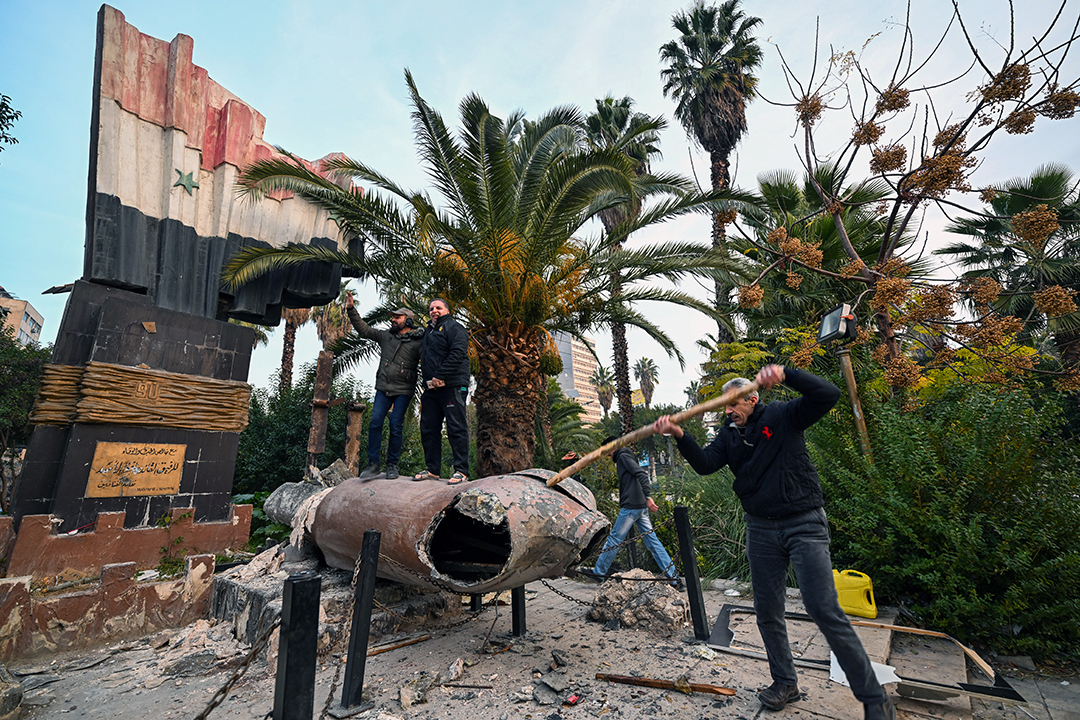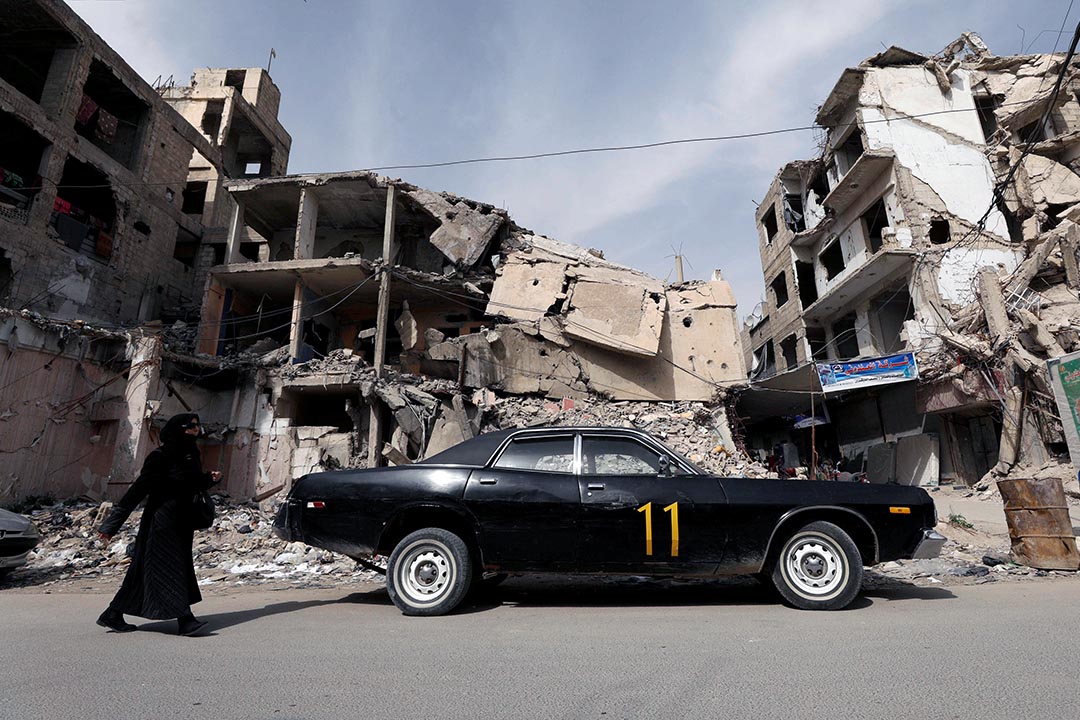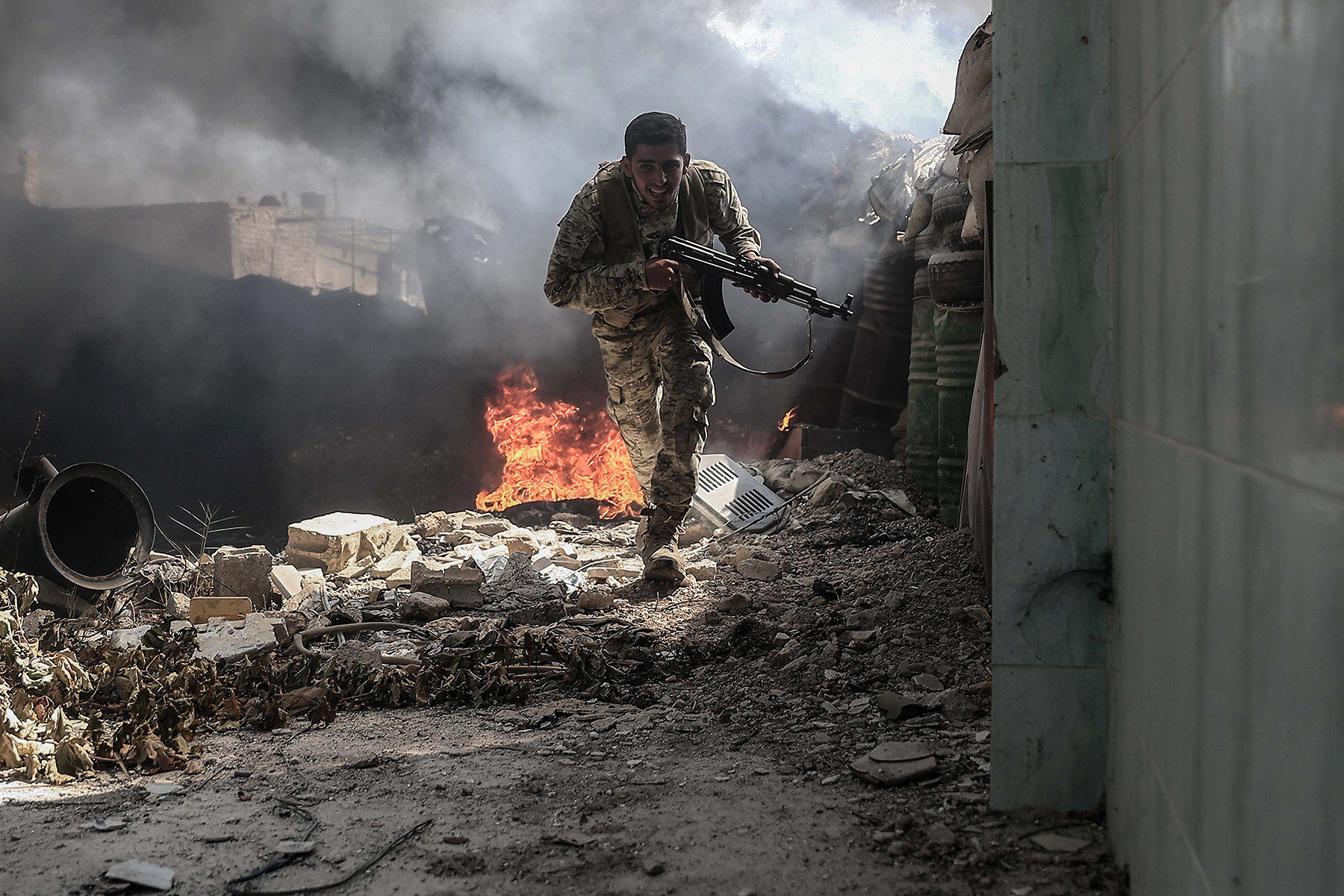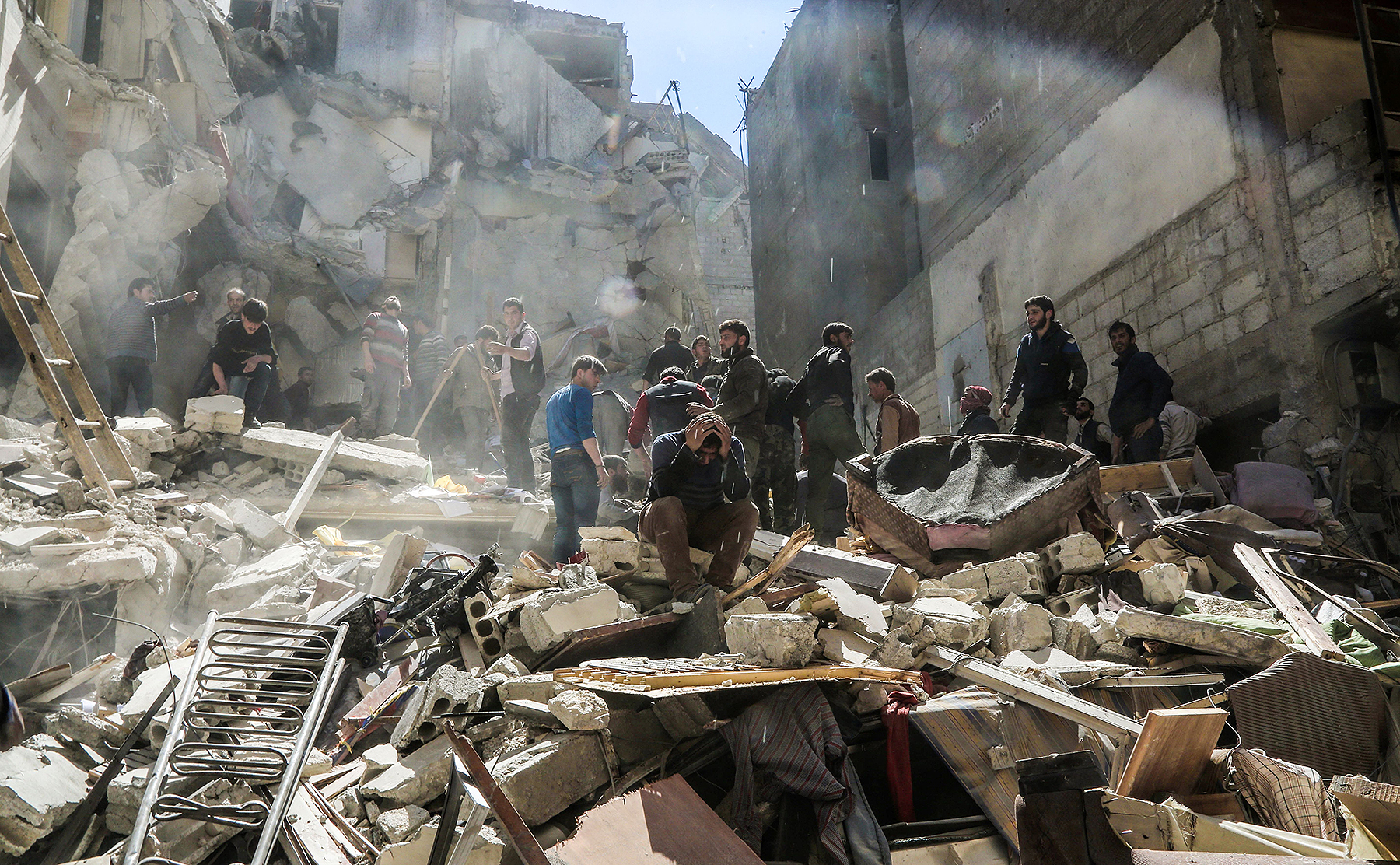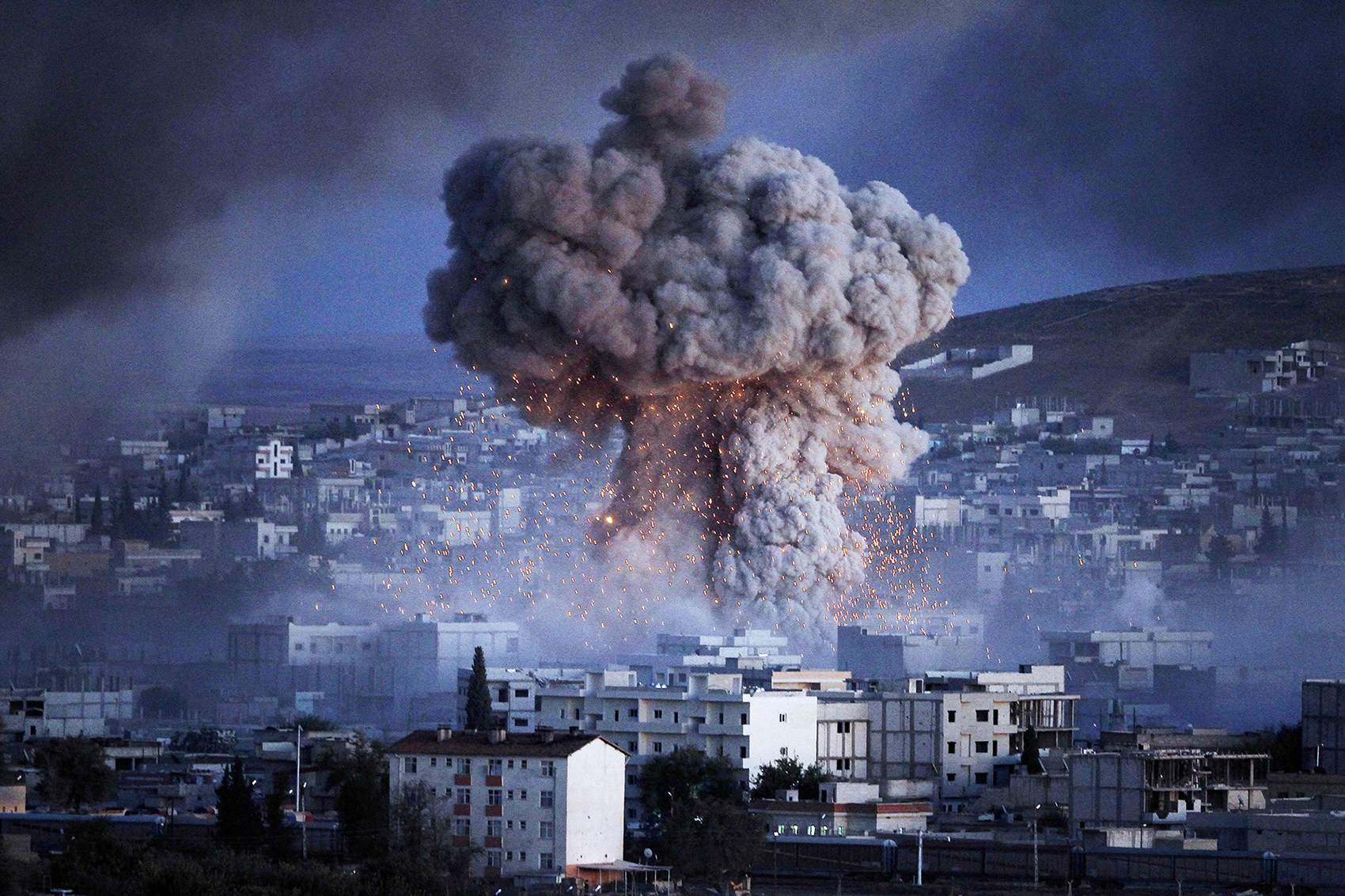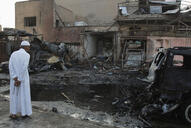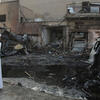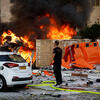On December 8, 2024, the Bashar al-Assad regime fell following a ten-day offensive carried out by rebel forces, beginning with the rebels’ seizure of Aleppo on November 30. The armed coalition was led by Islamist militant group Hayat Tahrir al-Sham (HTS) and the Turkish-backed Syrian National Army (SNA). The upheaval put an end to over fifty years of the Assad family’s rule of Syria and four years of largely frozen dynamics in the Syrian civil war, which has been ongoing since 2011. Amid the fall of the capital city, Damascus, to HTS and aligned forces, deposed President Assad fled to Moscow. Rebels freed Assad regime prisoners throughout the offensive as they seized new territory. Russia, Iran, and Hezbollah—longtime supporters of Assad’s government—did not send significant support to his Syrian Arab Army (SA) during the rebel offensive. Concurrently, the Kurdish-dominated Syrian Defense Forces (SDF), which controls parts of northeastern Syria, continue to clash with Arab tribes that accuse the group of discrimination while Turkey and its proxies continue attacks on Kurdish forces. Factionalized fighting has made space for the self-proclaimed Islamic State to maintain a presence and launch attacks. Additionally, Israel regularly strikes Iranian and Syrian military positions in Syria and has increased attacks, including hitting the Damascus and Aleppo airports, since Hamas’s October 2023 attack on Israel.
What began as protests against President Assad’s regime in 2011 quickly escalated into a full-scale war between the Syrian government—backed by Russia and Iran—and anti-government rebel groups—backed by the United States and a rotating number of U.S. allies, including France, the United Kingdom, Italy, Saudi Arabia, Turkey, Jordan, and the United Arab Emirates (UAE). Three campaigns drove the conflict: coalition efforts to defeat the self-proclaimed Islamic State, violence between the Syrian government and opposition forces, and military operations against Syrian Kurds by Turkish forces.
The Islamic State began seizing control of territory in Syria in 2013. After a series of terrorist attacks coordinated by the Islamic State across Europe in 2015, the United States, the United Kingdom, and France—with the support of Turkey, Saudi Arabia, and other Arab partners—expanded their air campaign in Iraq to include Syria. Together, these nations have conducted over eleven thousand air strikes against Islamic State targets in Syria, while the U.S.-led coalition has continued its support for ground operations by the Syrian Democratic Forces (SDF). Turkish troops have been involved in ground operations against the Islamic State since 2016 and have launched attacks against armed Kurdish groups in Syria.
Meanwhile, at the request of the Syrian government in September 2015, Russia began launching air strikes against what it claimed were Islamic State targets, while Syrian government forces achieved several notable victories over the Islamic State, including the reclamation of the city of Palmyra. According to the U.S.-led coalition against the Islamic State, Iraqi security forces and the SDF have reclaimed 98 percent of the territory formerly held by the group in Iraq and Syria, including the cities of Raqqa and Deir al-Zour.
With Russian and Iranian support, the Syrian government has steadily regained control of territory from opposition forces, including the opposition’s stronghold in Aleppo in 2016. The regime has been accused of using chemical weapons numerous times over the course of the conflict, resulting in international condemnation in 2013, 2017, and 2018. Opposition forces have maintained limited control in Idlib, in northwestern Syria, and on the Iraq-Syria border. However, the 2023 Turkey-Syria earthquake has made effective governance nearly impossible, as the opposition forces have scrambled to meet the needs of citizens.
Efforts to reach a diplomatic resolution have been unsuccessful. Geneva peace talks on Syria—a UN-backed conference for facilitating a political transition led by UN Special Envoy Staffan de Mistura—have been unsuccessful in reaching a political resolution, as opposition groups and Syrian regime officials struggle to find mutually acceptable terms for resolving the conflict. A new round of peace talks began in Geneva in May 2017 with an eighteen-person delegation from Syria but has since stalled. Also in 2017, peace talks initiated by Russia in Astana, Kazakhstan, with Iran, Turkey, and members of Syria’s government and armed opposition leaders resulted in a cease-fire agreement and the establishment of four de-escalation zones. However, shortly after the cease-fire was announced, attacks by Syrian government forces against rebel-held areas in the de-escalation zones resumed.
Under the President Donald J. Trump administration, the United States largely withdrew from Syria, leaving only about 400 U.S. troops as a contingency force. On January 16, 2019, an attack in Manbij claimed by the self-proclaimed Islamic State killed at least nineteen people, including four Americans. Prior to that attack, only two Americans had been killed in action in Syria since the U.S.-led campaign began. The U.S.-led international coalition continues to carry out military strikes against the remnants of the Islamic State, as well as a number of Iranian-backed militias.
The departure of most U.S. troops increased uncertainty around the role of other external parties to the conflict—including Iran, Israel, Russia, and Turkey—as well as the future of internal actors. Growing Russian involvement has been instrumental in the Syrian government’s success in reclaiming territory. While Russia has publicly stated that it only provides air support to the regime, it has sent the Wagner Group, a private military contractor, to fight in Syria. Ongoing violence and proxy conflicts have also facilitated the resurgence of extremist groups.
Meanwhile, the humanitarian situation in Syria remains dire, with 7 out of 10 Syrians requiring humanitarian assistance. According to estimates from the Syrian Observatory for Human Rights, more than 600,000 people have been killed since the start of the war. In its 2023 Global Appeal, the United Nations reported that more than 6.9 million are currently internally displaced, with more than 5.4 million living as refugees abroad. Many refugees have fled to Jordan and Lebanon, straining already weak infrastructures and limited resources. More than 3.4 million Syrians have fled to Turkey, and many have attempted to seek refuge in Europe.
On February 6, 2023, a 7.8 magnitude earthquake and 7.5 magnitude aftershock struck southeast Turkey and northwest Syria, representing one of the worst natural disasters of this century. Estimates in May 2023 put the death toll at almost 60,000, with 50,700 casualties in Turkey and 8,400 in Syria. Syria’s twelve years of conflict have severely hindered its relief efforts—the head of the World Food Programme described the situation as a “catastrophe on top of catastrophe.” In Syria alone, the earthquake is estimated to have caused $5.1 billion in damages.
Earthquake response efforts were complicated by the territorial divisions stemming from Syria’s civil war. The northwest corner of Syria most affected by the earthquake is held by rebel forces, and the Syrian government has long restricted access to the region. Consequently, international aid needed to be approved by the Turkish government to transit the sole humanitarian aid corridor between Syria and Turkey, known as the Bab al-Hawa crossing. However, the earthquake badly damaged the roads linking Turkey to Syria, and the Turkish government was absorbed with its own relief efforts. The first United Nations aid convoy reached Bab al-Hawa on Thursday, February 9. On Friday, February 10, the Syrian government announced it would grant permission to international aid groups to access rebel-held areas of Syria, but did not provide a timeline for doing so.
In May 2023, Iranian President Ebrahim Raisi met with President Bashar al-Assad in Damascus to strengthen economic cooperation—marking the first visit of an Iranian president to Syria since the war. Later that month, the Arab League agreed to re-admit Syria after a twelve-year suspension, despite the persistence of Western sanctions against President Assad’s government that could deter oil-rich Arab countries from investment in Syria. In July 2023, Iraqi Prime Minister Mohammed Shia al-Sudan discussed drug trafficking, the return of Syrian refugees, and the removal of the Western sanctions with President Assad in Damascus.
Throughout August 2023, the Syrian army was subject to various Islamic State and Israeli military attacks. Attacks by Islamic State sleeper cells in Syria, especially in the vast desert areas they once controlled, have increased throughout 2023. For example, a bus carrying Syrian soldiers in the eastern desert province of Deir Ezzor was ambushed by the Islamic State, killing twenty-three. Meanwhile, an Israeli missile attack near Damascus in early August killed at least four Syrian soldiers and wounded four others. Although Israel has carried out attacks against what it has described as Iran-linked targets in Syria for years, the number and scope have increased following the October 7 Hamas attack on Israel. Since December, Israeli strikes in and around Damascus have killed more than half a dozen members of Iran’s Islamic Revolutionary Guard Corps (IRGC), among them one of Iran’s top intelligence officials.
Conversely, Iran-backed militia groups in Syria and Iraq that oppose Israel’s campaign in Gaza have attacked U.S. troops in the region at least 165 times since the Israel-Hamas War began. There are currently 900 U.S. troops stationed in Syria to prevent a resurgence of Islamic State activity. Since mid-October 2023, American bases in Iraq and Syria have been subject to attacks from these various groups. On November 23, U.S. and international forces in northeastern Syria and Iraq were attacked with drones and rockets four times in twenty-four hours. In February 2024, the U.S. conducted a series of retaliatory strikes following an attack in Jordan on a U.S. military outpost near the Syrian border that killed three U.S. soldiers. The strikes included more than eighty-five targets throughout Iraq and Syria, though U.S. officials have signaled that these strikes were only the start of their response. In response, Iran-backed militias have begun a series of new strikes on U.S. bases, with a drone strike in the eastern province of Deir el-Zour in Syria killing seven and injuring at least eighteen other Kurdish fighters.


